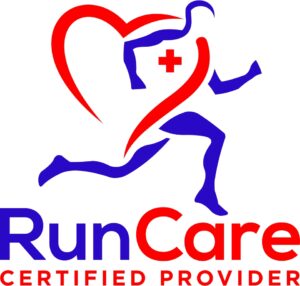
Introduction
Welcome to another informative blog post from WildHawk Physical Therapy. In this comprehensive article, we will delve into a common concern among runners: running injuries. Whether you’re an avid runner looking to enhance your knowledge or someone dealing with persistent running-related discomfort, gaining a thorough understanding of the causes, symptoms, treatment options, and preventive measures for running injuries is essential.
Running Injuries: A Comprehensive Examination
Running injuries, often a runner’s nemesis, can disrupt your training routine and hinder your running goals. These injuries can result from various factors, including overuse, poor biomechanics, inadequate preparation, and even unexpected accidents.
Understanding Running Injuries
To fully grasp the complexities of running injuries, let’s explore the key aspects:
- Types of Running Injuries: Running injuries can encompass a wide range of conditions, including shin splints, plantar fasciitis, iliotibial band syndrome (ITBS), stress fractures, runner’s knee, Achilles tendinitis, and more. Each injury has its unique characteristics and causes.
- Contributing Factors: Factors such as running surface, footwear, running form, and training volume can significantly contribute to the development of running injuries. Understanding these factors can help you make informed decisions about your training.
Spotting the Signs of Running Injuries
Running injuries typically present with several distinctive symptoms, including:
- Pain During or After Running: The most common symptom is pain, which may occur during your run or become evident afterward. The location and nature of the pain can vary depending on the specific injury.
- Swelling and Tenderness: Some injuries may lead to localized swelling and tenderness in the affected area. Pay attention to any unusual sensations or changes in your body.
- Altered Running Form: You may notice changes in your running gait or form due to pain or discomfort. These alterations can place additional stress on other parts of your body, potentially leading to secondary injuries.
- Limited Range of Motion: Certain injuries can result in decreased mobility or range of motion in specific joints. Recognizing these limitations is essential for seeking appropriate treatment.
The Role of Physical Therapy in Managing Running Injuries

Now that we’ve explored the nuances of running injuries, let’s discuss the pivotal role that physical therapy plays in managing these conditions.
Professional Assistance: A Vital Step
If you’re dealing with running injuries or suspect you may have one, seeking professional assistance is crucial. Early intervention can significantly improve your recovery and help you get back to running pain-free. A licensed physical therapist can provide you with an accurate diagnosis and a tailored treatment plan.
The Importance of Early Intervention
Timely diagnosis and treatment are of utmost importance when it comes to managing running injuries. Delaying treatment can lead to prolonged recovery periods and potential complications, making it essential to address issues promptly.
Regaining Comfort and Functionality Through Treatment
When it comes to addressing running injuries, physical therapy plays a pivotal role in helping runners regain comfort and functionality. Here’s what you can anticipate during physical therapy:
- Personalized Rehabilitation Plans: Your physical therapist will create a customized rehabilitation program tailored to your specific injury and goals. These exercises focus on improving strength, flexibility, and stability to alleviate pain and enhance your running performance. Depending on your injury, exercises may target the affected area or focus on strengthening complementary muscle groups.
- Manual Therapy Techniques: Physical therapists often use hands-on techniques to improve joint mobility, reduce pain, and enhance soft tissue flexibility. These techniques may include joint mobilization, soft tissue manipulation, and stretching. Manual therapy can help restore normal tissue function and accelerate the healing process.
- Gait Analysis: Analyzing your running gait can help identify biomechanical issues that may be contributing to your injury. Your physical therapist can provide guidance on modifying your running form to reduce the risk of future injuries. Adjusting your stride, foot strike, or cadence may be necessary to prevent further problems.
Effective Strategies for Injury Prevention

Preventing running injuries is as crucial as managing them. Here are some strategies to help prevent running injuries:
- Proper Warm-up and Cool-down: Incorporate dynamic warm-up exercises and stretching into your running routine to prepare your muscles and joints for activity and aid in recovery. Cooling down with static stretches can help maintain flexibility.
- Gradual Progression: Avoid overtraining and excessive increases in mileage or intensity. Gradually build up your running volume to give your body time to adapt. Listening to your body and recognizing when to rest is equally important.
- Proper Footwear: Invest in high-quality running shoes that provide the right support and cushioning for your foot type and running style. Visit a specialty running store for a professional fitting if needed.
- Cross-Training: Include cross-training activities in your fitness regimen to improve overall strength and flexibility, reducing the risk of overuse injuries. Activities like swimming, cycling, and strength training can complement your running routine.
- Running Form Analysis: Consider seeking a running coach or physical therapist with expertise in running mechanics to assess your form. Small adjustments in your running technique can have a significant impact on injury prevention.
Frequently Asked Questions:
Q: Can I continue running with a running injury?
A: It’s essential to consult with a healthcare professional for a proper diagnosis and treatment plan. In some cases, you may need to temporarily reduce or modify your running activity to allow for healing. However, continuing to run with certain injuries may exacerbate the problem, so it’s crucial to follow medical advice.
Q: Are there specific stretches or exercises to prevent running injuries?
A: Yes, your physical therapist can recommend specific stretches and exercises tailored to your needs to prevent running injuries. A comprehensive strengthening and flexibility program can help reduce your risk. Exercises targeting your core, hip muscles, and lower extremities can enhance stability and support proper biomechanics.
Q: How long does it take to recover from a running injury?
A: Recovery time varies depending on the type and severity of the injury, as well as the individual’s commitment to rehabilitation. With proper treatment and rehabilitation, many runners can return to their regular running routine within a few weeks to a few months. However, more severe injuries may require longer recovery periods and ongoing preventive measures.
Conclusion
In conclusion, running injuries can be frustrating, but with the guidance of our experienced team at WildHawk Physical Therapy, you can effectively manage pain, recover, and prevent future injuries. Don’t let running injuries derail your running journey. If you’re experiencing running-related pain or suspect you have a running injury, reach out to us at WildHawk Physical Therapy for a comprehensive evaluation and a personalized treatment plan. Your path to pain-free and enjoyable running begins with us.








